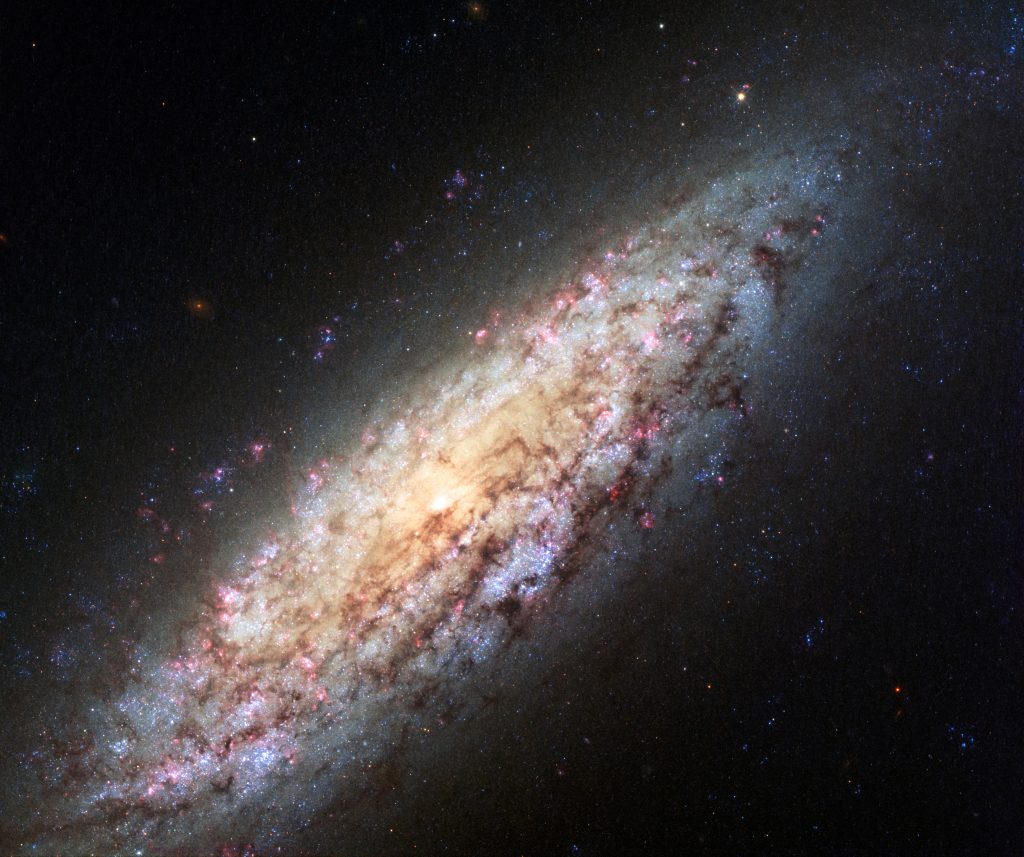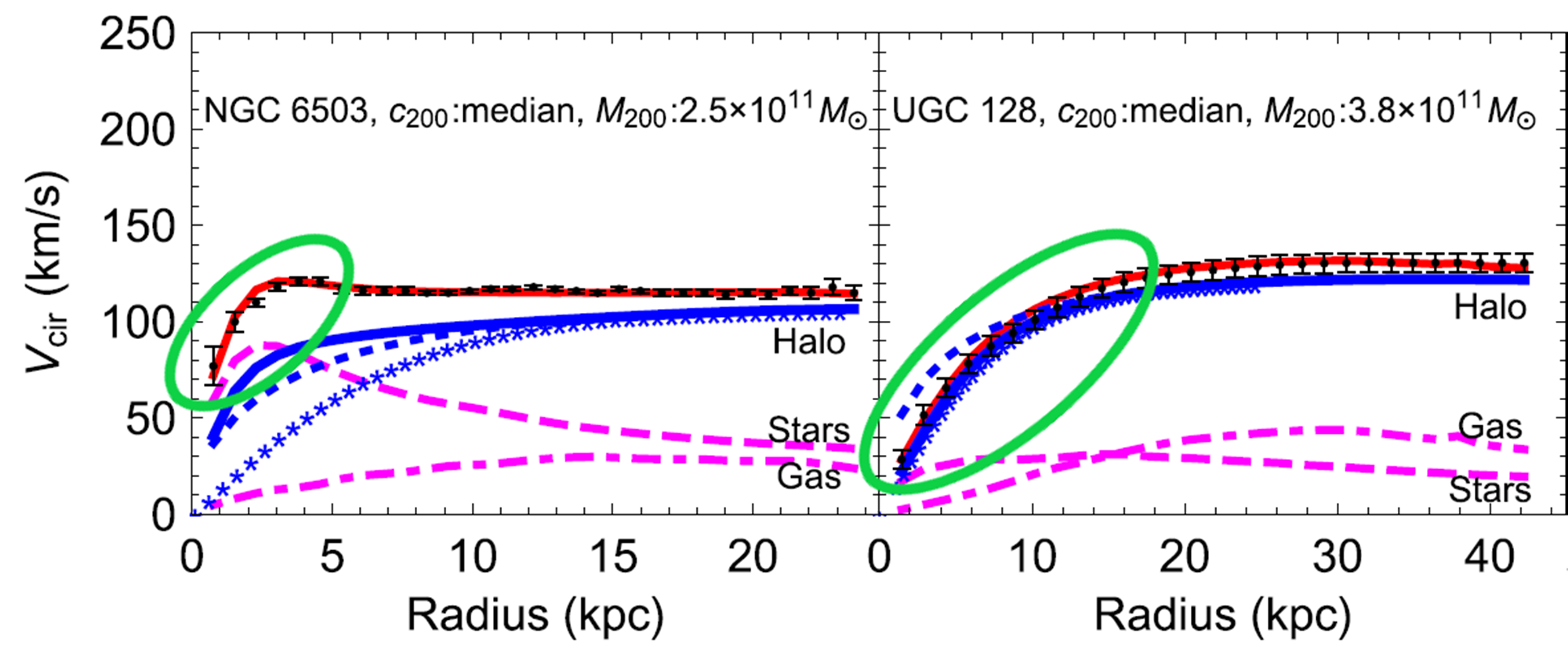
Self-Interacting Dark Matter (SIDM) posits that dark matter particles interact with each other. In contrast, the Cold Dark Matter (CDM) paradigm states that dark matter particles do not experience collisions. SIDM was theorized to address problems on small scales, like the density profiles of dwarf galaxies being too dense in their cores with a CDM profile. SIDM alleviates this problem as particles that scatter exchange energy and thermalize, easing the over-density in the core, which provides a better fit to dwarf halo observations. Another problem with CDM is something called the diversity problem, which can be explained as follows: Spiral galaxy halos that are expected to have similar rotation curves can have very different profiles in their inner regions, and it isn’t clear how we can produce the observed scatter using CDM models.
Let’s take a look at the following plots:

The above plots are rotation curves for two galaxies, NGC 6503 and UGC 128. A rotation curve is just a plot of the circular velocities of stars at various radii; that is, at points from the core of the galaxy, and outward through its edge. In the plots above, look at the black data points (with error bars) and note that as you move out to larger radii, both galaxies seem to converge at a similar maximum circular velocity of ~130 km/s. Now, look at the parts encircled in green (and again, only the black data points): are these portions also similar? They aren’t. In fact, they are drastically dissimilar near the inner core regions. Diversity in the inner halo is driven by the baryons (ie. stars and gas) in the galaxy: where the surface density of stars is low, the density of dark matter is also low; conversely, where the surface density of stars is high, the dark matter density is high. That’s the essence of the diversity problem in galactic rotation curves.
In new research from one of our department’s professors, Manoj Kaplinghat, Hai-Bo Yu of UC Riverside, and colleagues, it has been shown that SIDM can explain the diversity problem!
Let’s go back to the above plots. The magenta curves are clearly indicated (dashed magenta is the curve for just the stars, and dotted-dashed magenta is the gas). The halo curves in blue are as follows: solid blue is the SIDM halo, dotted blue is CDM, and asterisk blue is SIDM when you neglect the contribution of baryons. But in galaxies of this size, we absolutely need to account for the baryon content because it is significant, and will modify the profile (and, as stated above, creates a diversity in galaxy halos). Now, take a look at the red curve: it includes the SIDM curve, plus the effects of stars and gas (baryons), and provides a fantastic fit to the data! You can find the paper in Physics Review Letters, here.
These plots are just two of 30 different galaxies exhibiting the diversity problem that Kaplinghat and his colleagues analyzed. All show that SIDM can very simply explain the diversity exhibited in galactic rotation curves. I remember two years ago, when I met with Kaplinghat about my plans to attend UCI, we discussed various aspects of SIDM. One of his concerns was whether SIDM could provide a reasonable explanation to the diversity problem. It’s exciting to learn this has been addressed in his latest work! Another score for SIDM and the world of astrophysics.
Post by Sophia Nasr, graduate student working on her PhD in Cosmology at UCI.